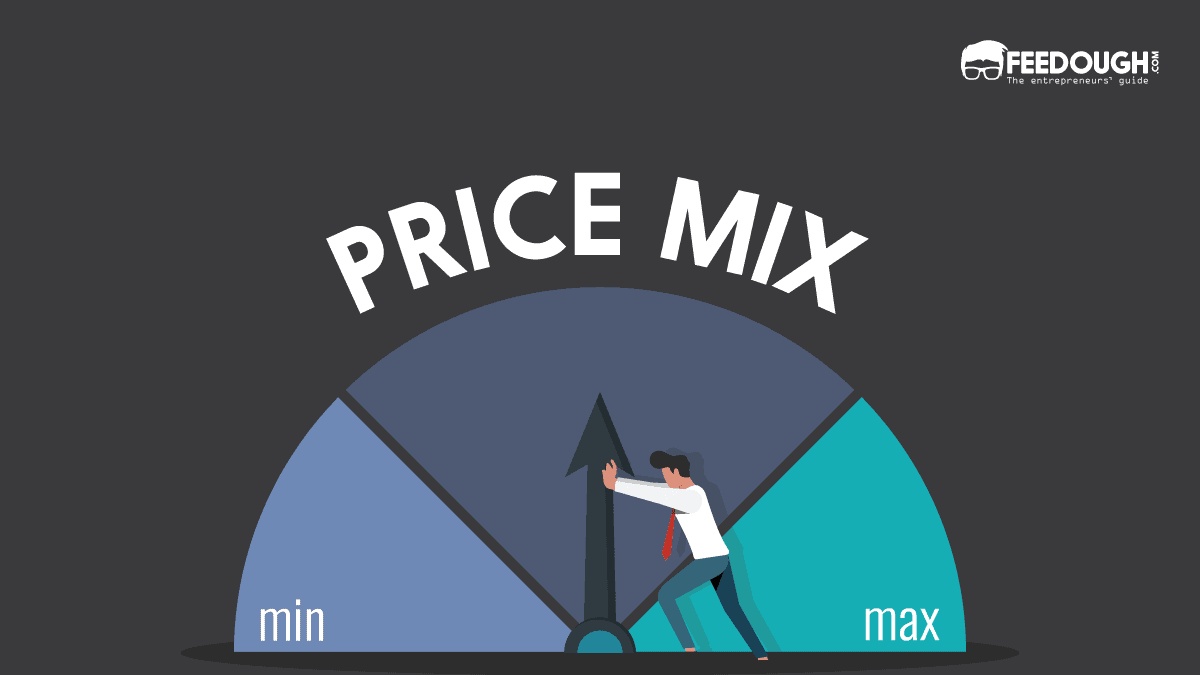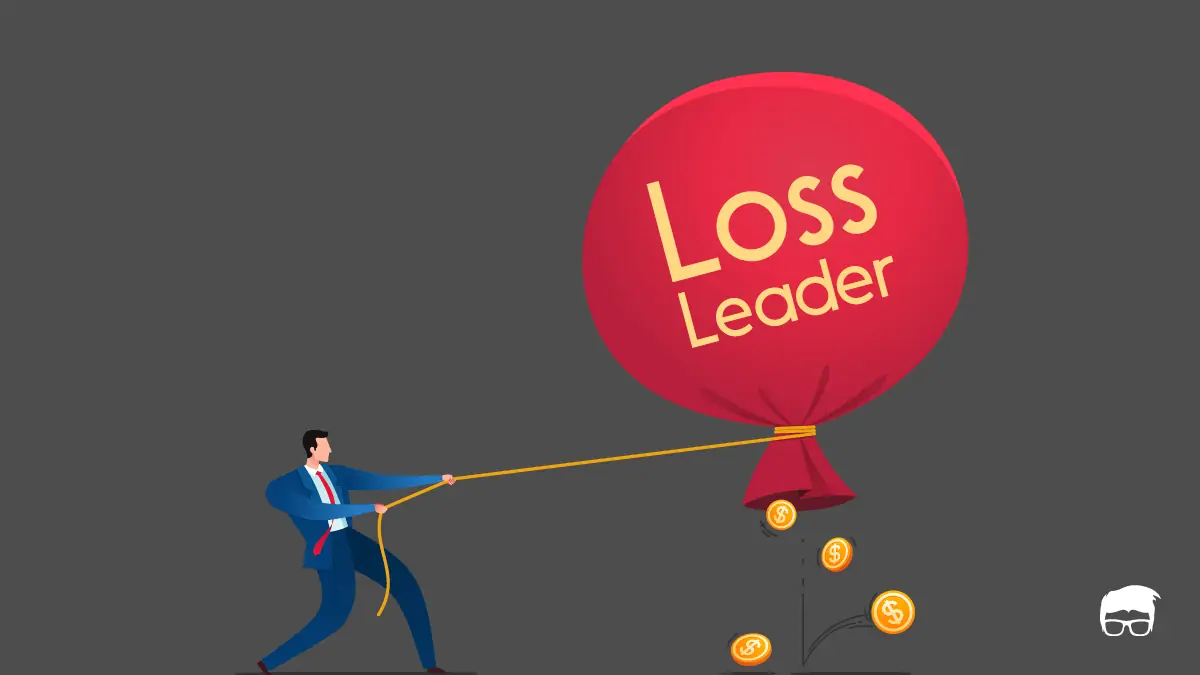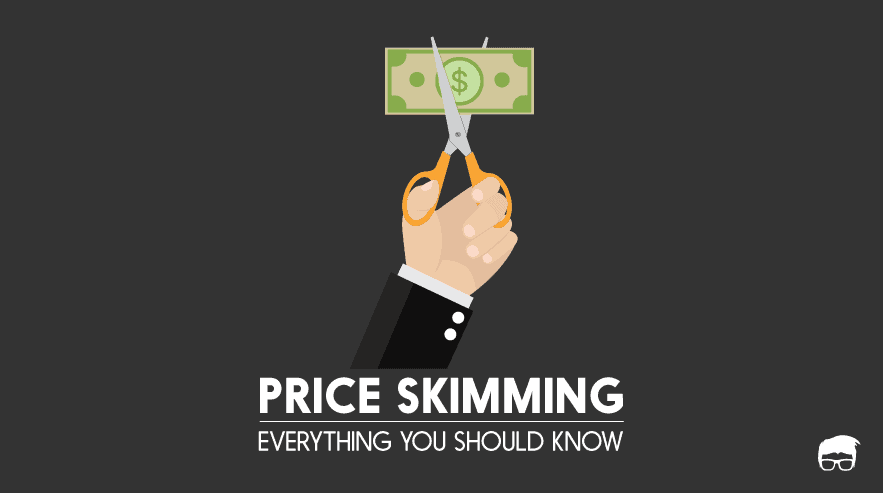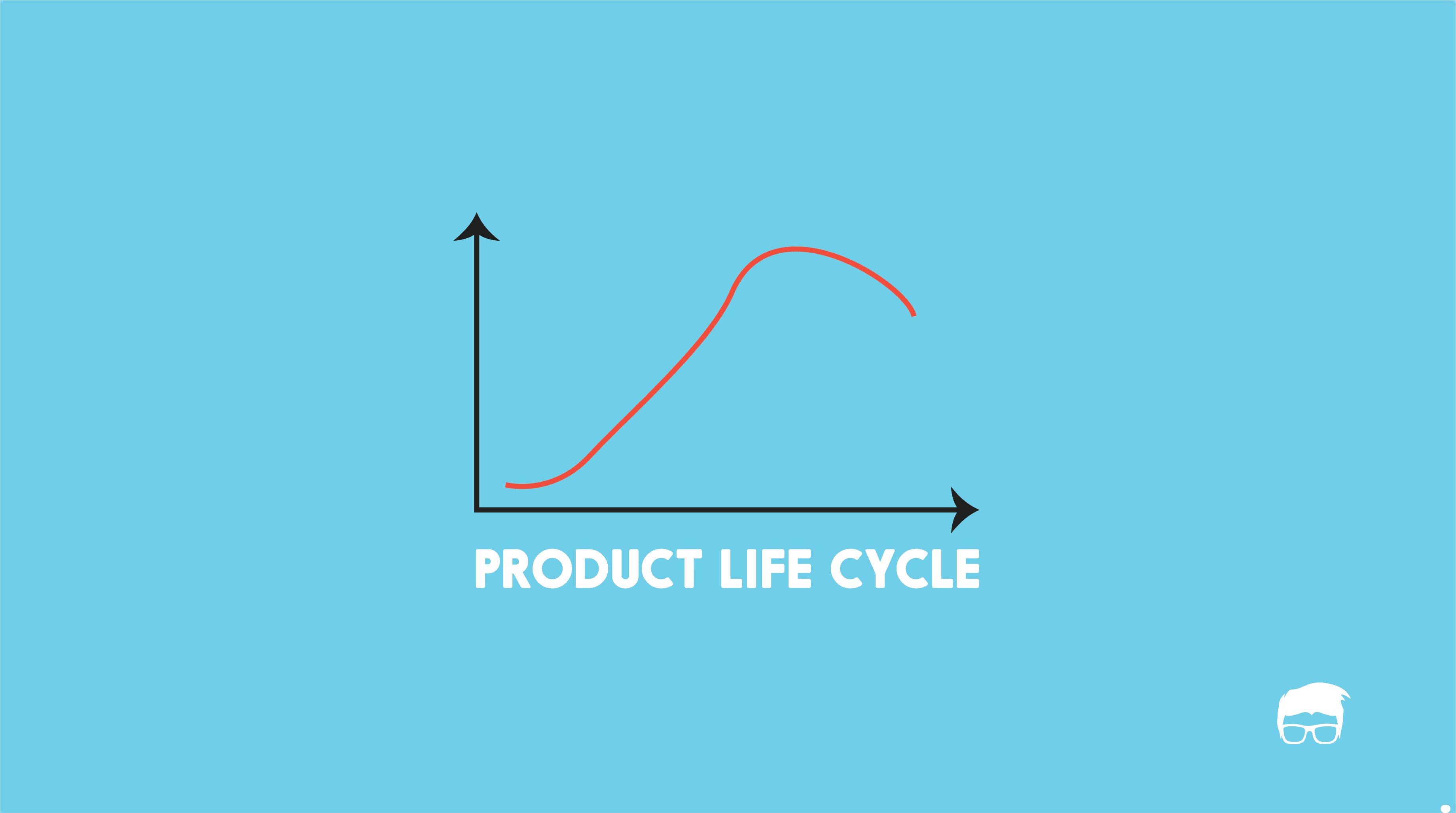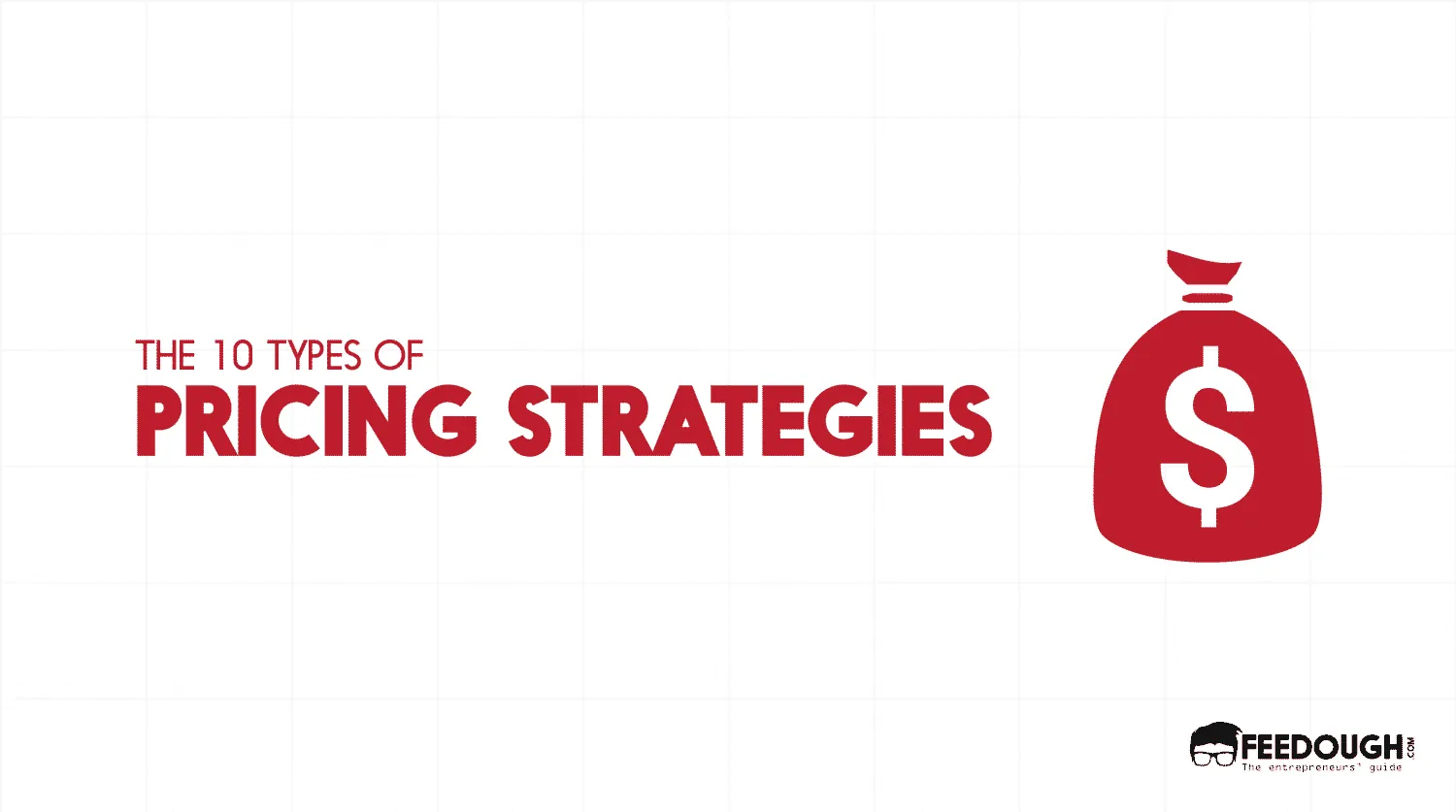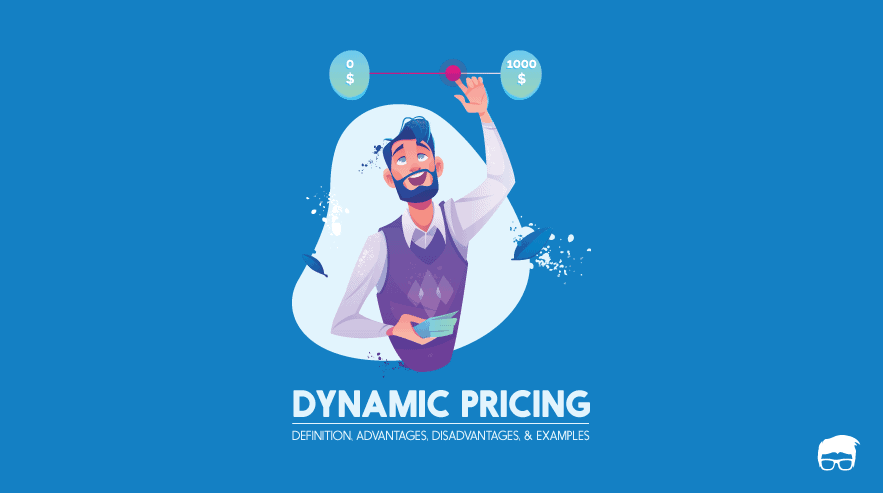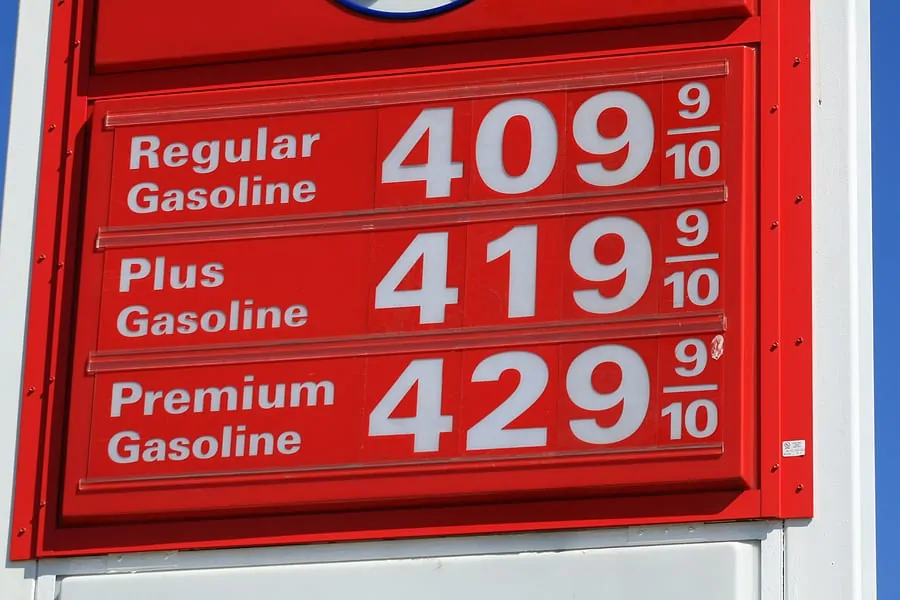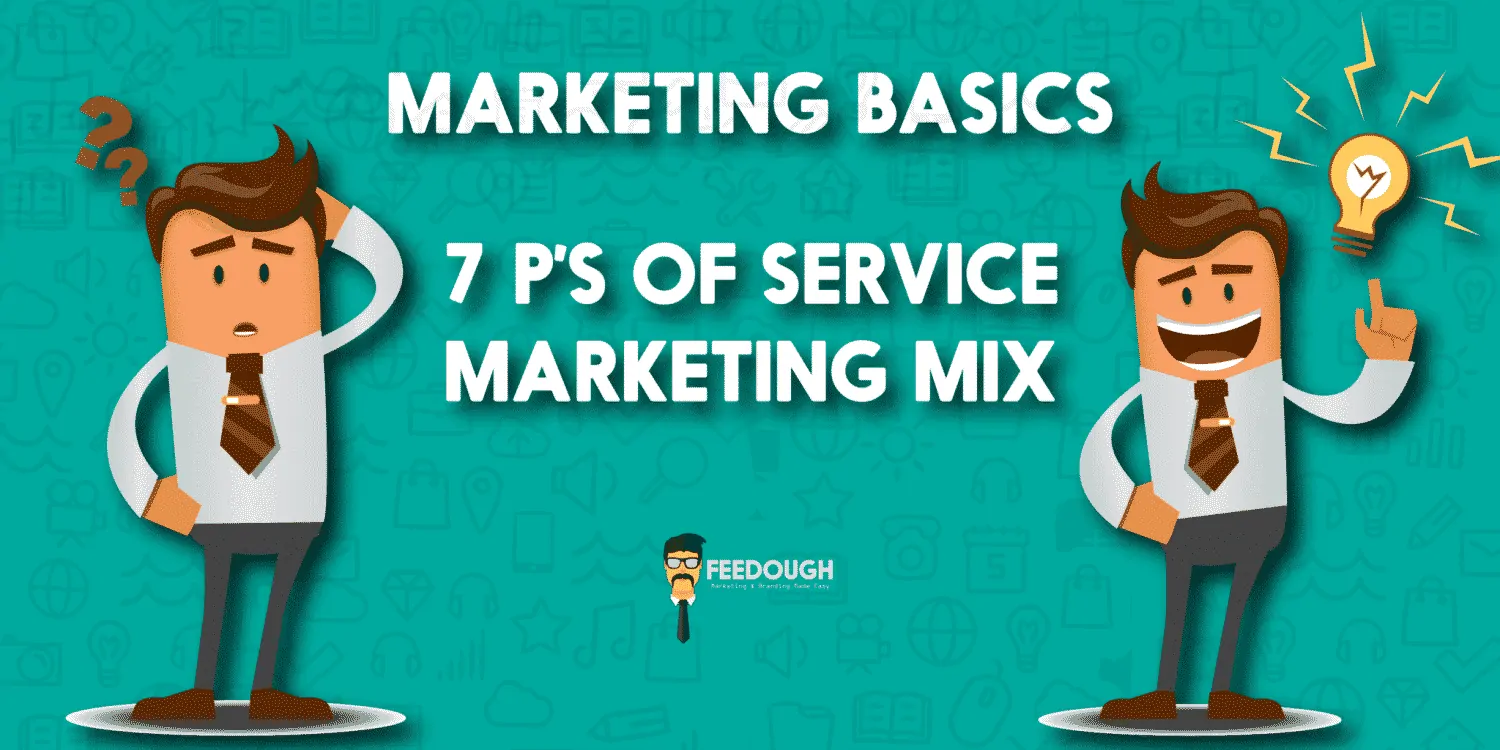A brilliant product in the correct location with excellent advertising cannot make a sale conceivable unless it is properly priced. Thus, price is one of the most influential factors that affect the buyer’s decision. It’s that one variable that can change a company’s status overnight and immediately affect revenues and profits. For instance, according to McKinsey, a 1% increase in price can bring about an 8% increase in operating profits.
However, pricing decisions inconsistent with a company’s competitive strategy can be dangerous, and that is why companies must address their price mix with much caution and attention. So, without further ado, let’s delve right into the most crucial element of the marketing mix – price mix.
What Is Price Mix?
Price mix is the combination of different ‘price-related variables’ determined by a producer to fix the price of the product or service he offers. These variables include the cost of making the product, the factors that influence the pricing decisions, the various pricing strategy, the pricing objectives, etc.
Simplistically, price is the amount of money customers have to pay to obtain a product. That is, it is the economic value of a product expressed in monetary terms. A well-chosen price can help the firm attain its financial objectives, adapt to the market realities, and conform to other elements of the marketing mix (product quality, distribution issues, promotion challenges).
The product’s price stipulates the product’s future, customer acceptability and is an instrument against the competitors. Thus, it should be weighed above other marketing elements since it is the only marketing mix component that generates revenue while other elements create cost.
The Importance of Price Mix
Price mix greatly influences a business’s growth and survival, prosperity and profitability, and brand image.
So, prices must be given full regard, as they significantly impact the company’s remaining activities.
For the following reasons, pricing is of essential importance.
It Regulates Demand
The price set by a producer directly affects the level of demand. Too high or low a price can put the development of the product at risk.
Under the law of demand, the price and quantity demand of a normal good is inversely proportionate, that is, the higher the price of a good, the fewer people will demand that good and vice-versa.
Usually, customers respond to high prices by switching to alternate options like substituting the product when the prices go up. For instance, if the train travel prices go up significantly, the customers may explore the idea of bus travel.
It Is A Determinant Of Profitability
Profit is the company’s ultimate goal, and the price of any commercial undertaking directly influences profits. In fact, price is the foundation for profit generation.
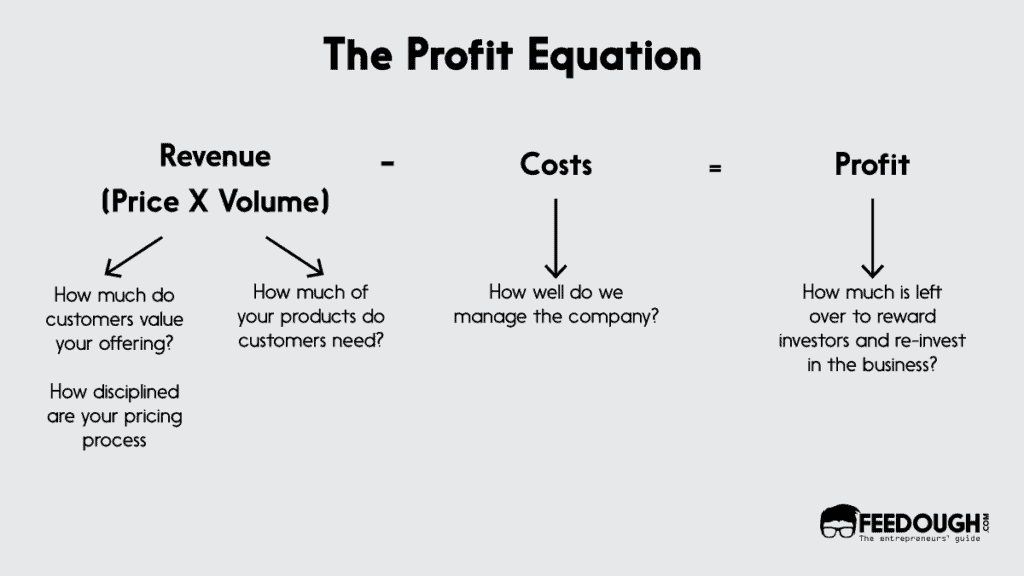
It is clearly evident from the profit equation that price is the only variable that has a multiplier effect on profit. Thus, the impact of price rises or falls is immediately reflected in the increase or decrease in product profits.
It’s An Integral Part Of Sales Promotion
It has been noted that even a slight price decrease leads to larger sales volume in the case of goods whose demand is price sensitive. However, marketers shouldn’t modify prices constantly as it may result in customers predicting price reductions. Instead, they should use short-term price reductions such as short-term discounts to enhance their sales.
It’s A Trigger Of First Impression
At the moment of purchase, the consumer attaches emphasis to the price of the good instead of its value. While a company’s overall marketing strategy may be excellent, many customers first see an item’s price tag even before developing an interest in the product. It’s a fact that many buyers are more likely to reject a product if it is costly. Thus, an effective pricing strategy solves this problem.
It’s The Most Adjustable Aspect Of The Marketing Mix
Prices can be adjusted quickly in comparison to other elements of the marketing mix.
For instance, changing the product design, distribution system, or advertisement would take a long time. However, price is quite flexible so that an organisation can react rapidly to changes in the market.
It’s A Means Of Comparison
Any company which sells high, medium, and low-priced goods must decide whether or not its pricing is equal or below or more than its competitors. Any seller should possess this knowledge as they can overcome competition to some extent by setting a reasonable price and thus, providing value for money.
Thus, prices represent corporate goals and policies and have a significant role in influencing marketing performance. It’s not only the cornerstone for profit generation but is also utilised to offset deficiencies in other marketing mix aspects.
Factors Affecting The Pricing Decision
A series of internal and external elements characterise the pricing decisions of any organisation. The factors under the company’s control are known as the internal factors, while the factors that affect price decisions but cannot be fully controlled by the enterprise are external factors.
Internal Factors
These include the pricing decisions based on marketing objectives, marketing mix strategies, and costs.
Costs
Simply put, the cost is the amount of money spent to produce a good or product. In general, at least in the long run, every seller wants to cover all their costs. They also try to gain a profit margin that goes beyond costs. They aim to keep the cost of producing a good or delivering a service lower than the price paid by the customer.
Two sorts of costs exist in general:
- Fixed Costs: It refers to the costs which are not affected by production or sales levels. It is also referred to as overhead costs. For example, the salary paid and the rent given.
- Variable Costs: Variable costs are called costs that fluctuate directly with the level of sales or production. For instance, raw material, labour, and electricity expenses are linked directly to the production and sale of items.
Pricing Objectives
A company must know what it plans to achieve before setting the price of a good. The clearer a firm is regarding its targets, the easier it is to set the prices. Thus, affecting the prices are these key marketing goals:
- Profit Maximisation: Given how various pricing levels affect profit, a company’s overall aim can be to maximise profits. However, there is a difference in maximising profit in the short and the long term. In the short run, maximising profits implies charging higher prices for the products. But to maximise its overall profit in the long run, it would choose a lower price per unit to acquire a higher market share and make more profit from higher sales.
- Revenue/Sales Maximisation: A corporation may concentrate less on profit and increase revenues by increasing sales to improve market share and reduce long-term costs.
- Return on Investment (ROI): As a marketing goal, a company may set the price according to the requirement that all products accomplish a specified percentage return on the company’s total marketing costs.
- Quality Leader: An enterprise may wish to use price to provide quality products/services and become the quality leader. To achieve this, a company may set high prices to cover higher performance and hefty R&D costs. For example, when Tata and Honda competed with European luxury cars, the price was high.
- Market Share: The pricing selection may differ if the company aims to hold a new market or retain a particular percentage of a current market. For new items, the price is reduced to capture a significant part of the market, and it gradually increases as and when the product becomes accepted by the target audience. In cases where there is a high amount of market competition for such items, companies might use pricing decisions to ensure that they keep market shares.
Marketing Mix Strategy
It is always crucial that the pricing decisions are coordinated with a consistent and effective marketing strategy since the product design, distribution, quality and amount of advertising, product differentiation, credit facility, and customer services provided are all influenced by the pricing decisions.
External Factors
External factors may include:
The Extent Of Competition In The Market
Any company needs to assess the nature and level of competition while choosing the product pricing. Usually, the price is set at the highest level if there is less competition. In contrast, it is fixed at the lowest levels when there’s free competition.
The Market And Demand
To understand how the market is affected by variations in price, it’s essential to understand the concept of “price elasticity of demand.” It determines how the quantity demanded of a good response to a change in price. Demand is considered elastic if a relatively small change in price leads to a significant change in the quantity demanded. Here, the price elasticity is numerically greater than one. The demand is called inelastic when a substantial change in price doesn’t significantly impact the quantity demanded. In such a case, the price elasticity is numerically less than one.
Government and Legal Regulations
At times, the government intervenes and regulates commodity prices to defend the public interest from unfair practices regarding price-fixing. For instance, in order to prevent smoking, the government sets high tobacco tariffs.
The Pricing Strategies
An effective pricing strategy compatible with other marketing aspects is crucial to help a business establish pricing that maximises revenue and produces a solid profit. This strategy depends on the goals of the company and a wide range of environmental and competition dynamics. Below, listed are some of the vital pricing strategies that companies use.
Cost-Based Pricing
This price strategy is designed to measure all the costs involved in producing, distributing, and selling a product and then pricing the product accordingly. This approach is often seen as an inexpensive method since the company tries to bring the consumer the maximum value.
This strategy is advantageous for companies that compete on prices and strive for optimum production efficiency. For instance, companies like Ryanair and Walmart can establish lower prices by consistently reducing costs wherever feasible.
Value-based Pricing
The most highly specialised pricing method by consultants is value-based pricing (VBP), where the pricing is based on the customer’s assessment of the product, that is, the rate at which customers are willing to pay. Here, the marketers ignore the cost of production and the market prices of the product.
Usually, companies that offer unique or highly valuable products with great features are better positioned to take advantage of the value pricing model. For instance, Starbucks has such a strong connection with their consumers that individuals flock to the local Starbucks for their caffeine needs, despite the many choices available at half the price.
Price Skimming
Under this strategy, a marketer initially sets a relatively high price for a product or service and gradually decreases the price. The idea behind the plan is to charge relatively high prices to recover the product development costs early and before competitors enter the market.
An excellent example of a price skimming strategy would be companies that sell electronic products like Apple iPhone and Sony PlayStation 3. Initially, the Playstation 3 was released in the US market at $599; however, the brand progressively dropped its price to less than $200.
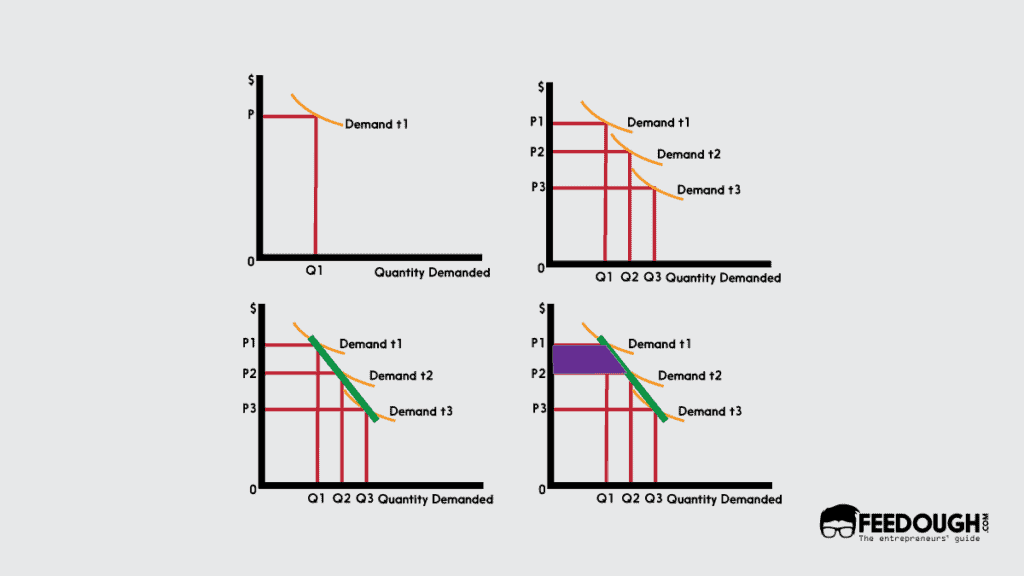
These are the graphical representations of price skimming. Also, price skimming is sometimes known as riding down the demand curve.
Psychological Pricing
Psychological pricing is based on the hypothesis of the psychological impact of specific prices on the customers. Here, the price is set at a little less than a round number price, such as $19,99. Thus, the prices charged are also known as “odd prices.”
The strategy is to make modest pricing modifications to make the customer think that the item costs are lesser. For instance, during an end-of-year sale, a product is priced at $199, and customers view this price as closer to $100 than $200.
Penetration Pricing
In this strategy, new products are priced at a lower level than the target market expectations. The aim is to make products and services more sensitive to consumers and convince them to try them out. If this strategy is implemented efficiently, it can increase market share and sales volume and discourage competition in the long run.
For instance, a satellite tv company may offer a low price and then increase the price as its client base expands or an online news website offering one-month free service for a subscription-based service.
Competitor-Based Pricing
Under this pricing strategy, a company set a price compared to its rivals. It can set the price of its product equal to or higher or lower than the price fixed by the competitors.
- When a company sets its price equal to the other competitor’s prices, it’s known as the going rate pricing. Generally, the price of agricultural items is set in this way.
- Sometimes, the price is fixed at a level that is below the price of rivals. This strategy is intended chiefly to attract price-sensitive clients by removing competition from the markets.
- Companies also set their product price above the price set by their rivals. It fosters the increase of the product’s market image or goodwill.
Premium Pricing
The approach of this strategy is to set a high price for attracting status-aware consumers (sometimes this strategy is referred to as prestige pricing). It is mainly done to improve and strengthen the luxury image of a product.
For example, Harrods, first-class airlines, and Porsche usually use this pricing strategy.
However, the companies that use this strategy seldom sell products at a discount as they feel it would harm the brand’s image. Instead, they provide gift packages that bring value to customers.
Bundle Pricing
This strategy involves the sale of numerous items as a single integrated product at a lower price. It goes by the name of a package deal or a buy one get one free discount.
For instance, this method is used in the software sector and the fast-food industry, where several goods may be bundled together. Even hotels provide packages that include lodging, meals, and activities for a special price.
Cost Plus Pricing
The simplest way of pricing is cost-plus or markup pricing, where a standard markup is added to the cost of the product. This markup is based on the amount of profit (return) the firm aims to generate.
There are significant differences in markups across various products. Popular markups (on price, not on cost) are 9% on baby food, 14% on tobacco items, 27% on dry food, 50% on greeting cards.
Cost plus pricing: p = AFC + AVC + X/Q
Therefore, cost-plus pricing equals the average variable cost plus average fixed cost plus the markup over costs on each output unit.
For instance, the cost of a product is $100. If a company aims to sell it at 20% profit, the cost-plus price would be $100 plus 100/100 x 20.
Price Mix Examples
Let’s understand how companies use different variables of price mix to establish their hold in the market.
Uniqlo, a Japanese clothing brand, is renowned worldwide for its low price and good quality products. Most of the products at Uniqlo are priced under $200. For instance, the price of jeans is $25 while that of a T-shirt is $15. Thus, the pricing objective of the brand is sales-oriented, aiming to increase market share.
Furthermore, the brand pays attention to quality and doesn’t go bogus on fashion trends like its competitors. Thus, in addition to its sales maximisation objective, the brand also aims to become a quality leader.
Moreover, Uniqlo’s pricing for the T-shirt always ends at 99. Thus, it follows a psychological pricing strategy along with temporary discounts.
Another example is Dove, a personal care brand that employs a competitive pricing strategy since it operates in a competitive environment. It distinguishes itself from its rivals by focusing on quality. For instance, Dove Damage Therapy Shampoo (700 ml) cost $11.70, versus Pantene Shampoo (700ml) cost $10.90.
Also, Dove charges $7.50 for a Dove Beauty Moisture Body Wash bottle and $13.90 for a bundle of two bottles. Thus, it also implements the bundle pricing strategy.
Pricing Mistakes that A Seller should Avoid
An effective price strategy helps businesses improve sales and establish a loyal customer base. However, the wrong price strategy can make companies struggle with customer service and profitability. Thus, given the importance of pricing, it’s significant to steer clear of the following pricing errors.
- Pricing too low: Enlight’s research has shown that overly low prices set by sellers account for 33% of pricing errors. So, even though low prices might attract more customers, it often implies that the product might be of poor quality.
- Not practising customer segmentation: Often, companies use the same approach for a lot of their customer base. Thus, by neglecting the fact that the value offered differs in different market segments for any product or service, a company creates a negative image in customers’ mindsets.
- Pricing too high: Companies think they’ll generate attractive returns on each transaction if they price their products excessively high. However, customers are very aware of the value they receive for their money and quit buying after they have concluded that things are overpriced. So,if the price is greater than customers’ perceived value, the sales cost increases, discount increases, sales cycles get extended, and thus, it generates insufficient profits.
- Not focusing on the customer experience: The value perceived by the customer is more important than what a company believes is the best deal. Thus, a seller’s biggest mistake is adopting a rigorous approach to cover their costs and totally neglecting their clients’ perspectives.
- Changing prices without forecasting competitors’ reactions: A company must consider the predicted competitive movements before setting the price. It is crucial to consider expected competitive price changes and objectively evaluate competition product and service quality when determining price modifications.
Go On, Tell Us What You Think!
Did we miss something? Come on! Tell us what you think of this article on price mix in the comments section.
An avid reader and economics enthusiast who is always eager to learn. Prachi is an aspiring leader who believes in what she does. Besides reading , she is fond of baking , dancing and travelling.
